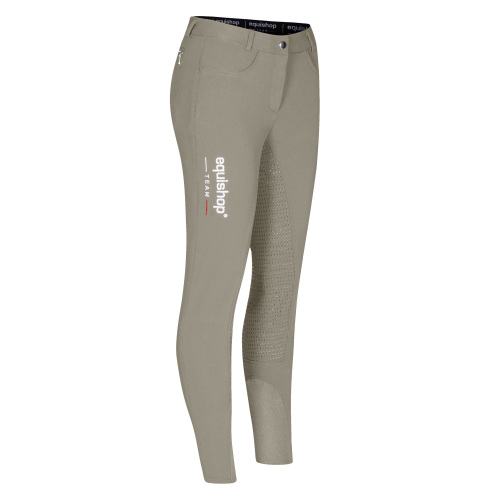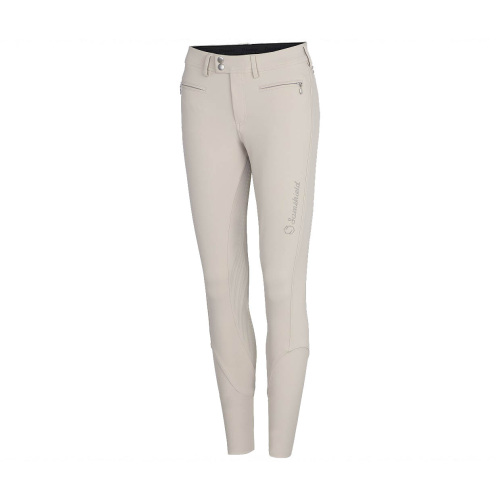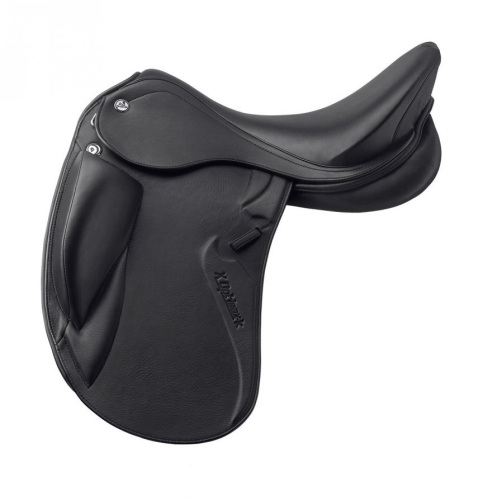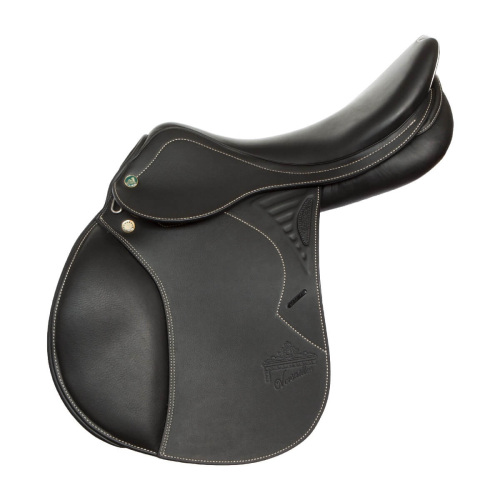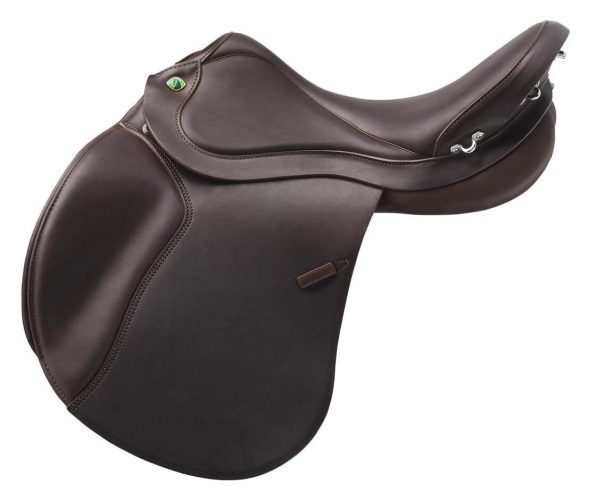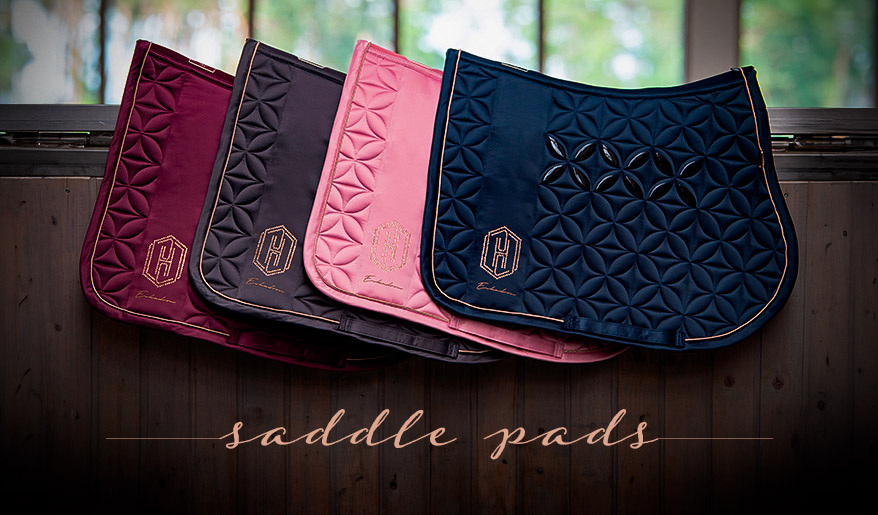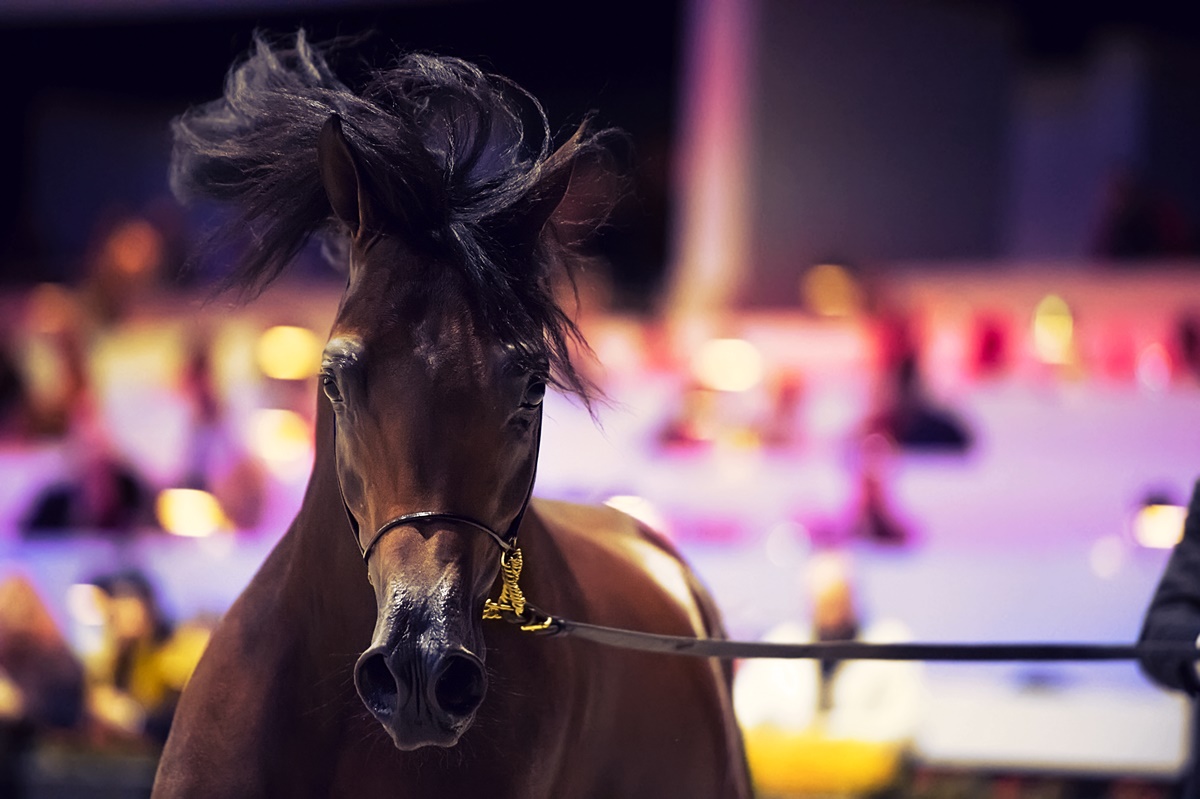
Arab horses are viewed by many as absolute beauty and a "father" of all the other horse breeds. One of the legends says that God created Arabians from a handful of the South Wind to construct an animal that will fly without wings. There is some truth in this legend – when someone sees a cantering Arabian, they won't be able to shake the image that the horse is not touching the ground but floating in the air.
Arabian Horses – breed history
Another legend says that Mahommed put his horses to the test and left them the whole day without water or food. Later in the evening, Mahommed called on his horses to prepare for battle, but only 5 mares answered his call. Those mares, instead of stopping at the waterhole to quench their thirst, reached their master and got together to defend everyone from the alleged enemy. Those 5 mares became mothers of today's Arabian horses.
There are numerous tales that touch upon the creation of Arabian horses. Probably, each one of them contains a bit of truth. The main characters of these tales are most often mares since it was believed by original breeders – Bedouin – that mares were more resilient, resistant, and gentle than stallions. Those characteristics were extremely important when traveling through harsh desert terrains.
Bedouins treated their horses with high respect, often as family members by giving them shelter in their tents. This is highlighted in an old Arabic saying - Let my children starve and thirst, but never my horse.
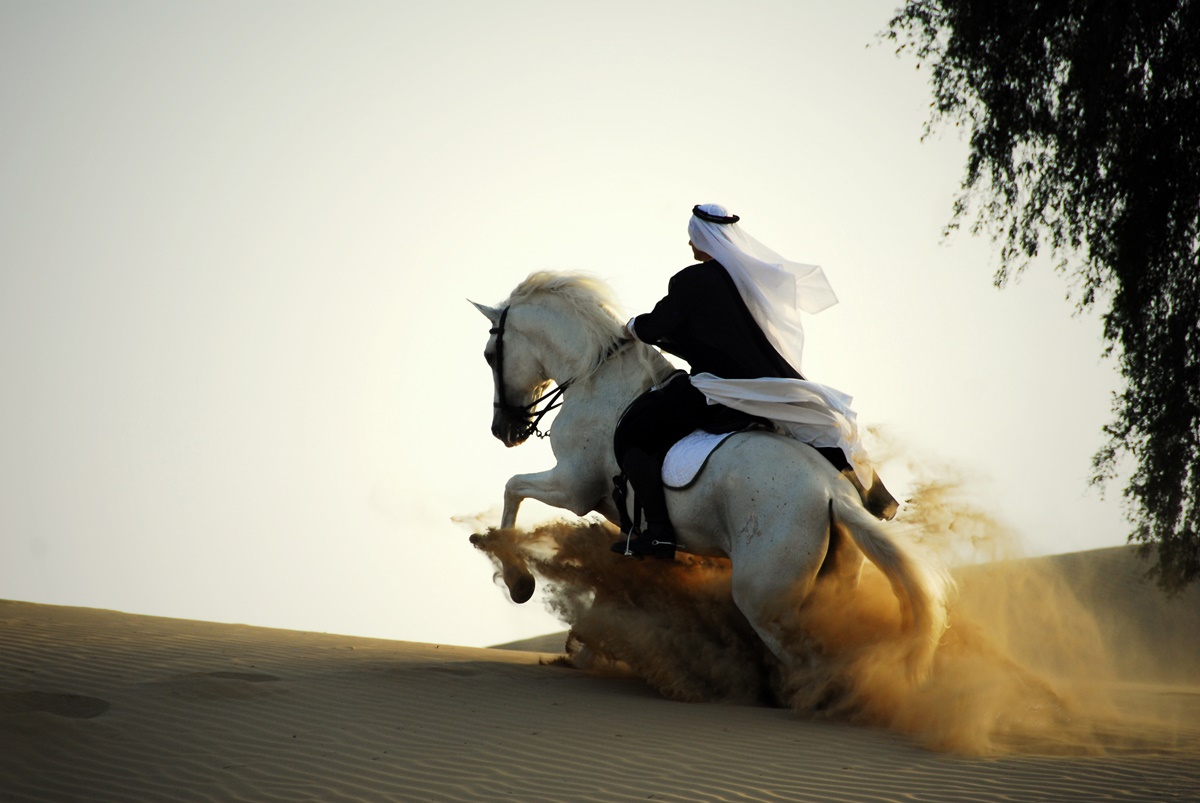
The creation of modern-day Arabians can be attributed to three founding fathers – stallions Kuhailan, Saklavi, and Munighi. Besides them, other stallions were also important for example Hadban, Hamdan, or O'Bajan.
Currently, Arabian horses are bred from North Africa through the Arabian Peninsula to Iran. There are also breeding stables in Europe (Poland, England, Germany, France) and the USA.
The most important organization that brings together breeders and horses is World Arab Horse Organization (WAHO) which deals with Arabian breeding problems.
Arabian horse in Poland – breeding
Polish breeding of Arabian horses is one of the most renowned in the world. Centuries of selective breeding and hard work created one of the most beautiful horses in the world. What's interesting, Polish breeding focused on the appearance of horses rather than their physical endurance (a different goal in comparison to e.g., France, where breeders create Arabian horses for endurance competitions).
Arabian studs in Poland:
- Janów Podlaski State Stud
- Michałów State Stud
- Białka Arabian State Stud
- Michałów State Stud
Other, newer studs can be found here. All studs must be registered in the Polish Arabian Breeding Association, which works under the worldwide WAHO.
Arabians in Janów Podlaski
The most famous stud in Poland is for sure Janów Podlaski State Stud in Wygoda established in 1817. The yearly horse sale held in August for years attracted buyers from all over the world, which made it a true celebration of Arabian horses. The stud can pride itself not only in horses but also in the architecture: classicist stable buildings and huge stretches of meadows, forests, and parks. What's interesting is the stud owns 2500ha of land, which is 18% of the whole area of Janów Podlaski municipality.
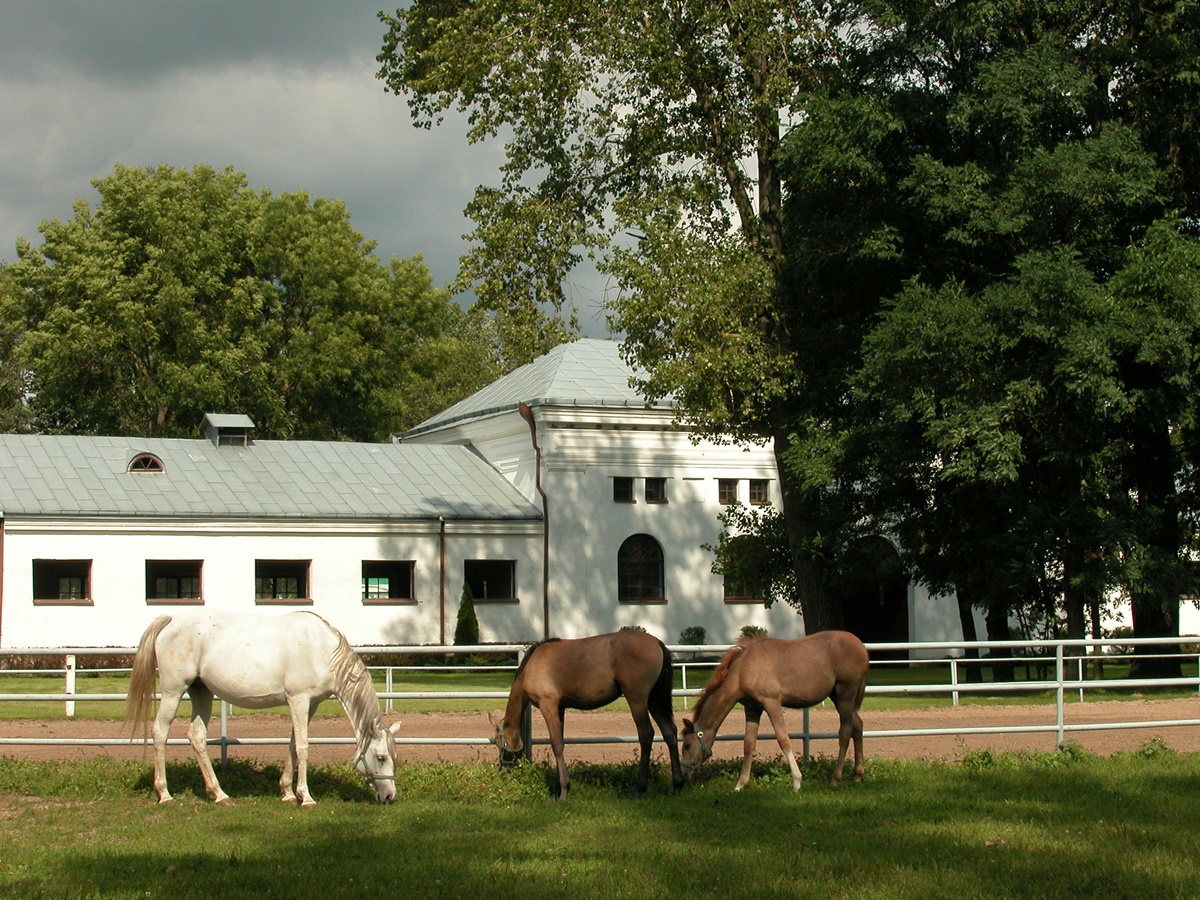
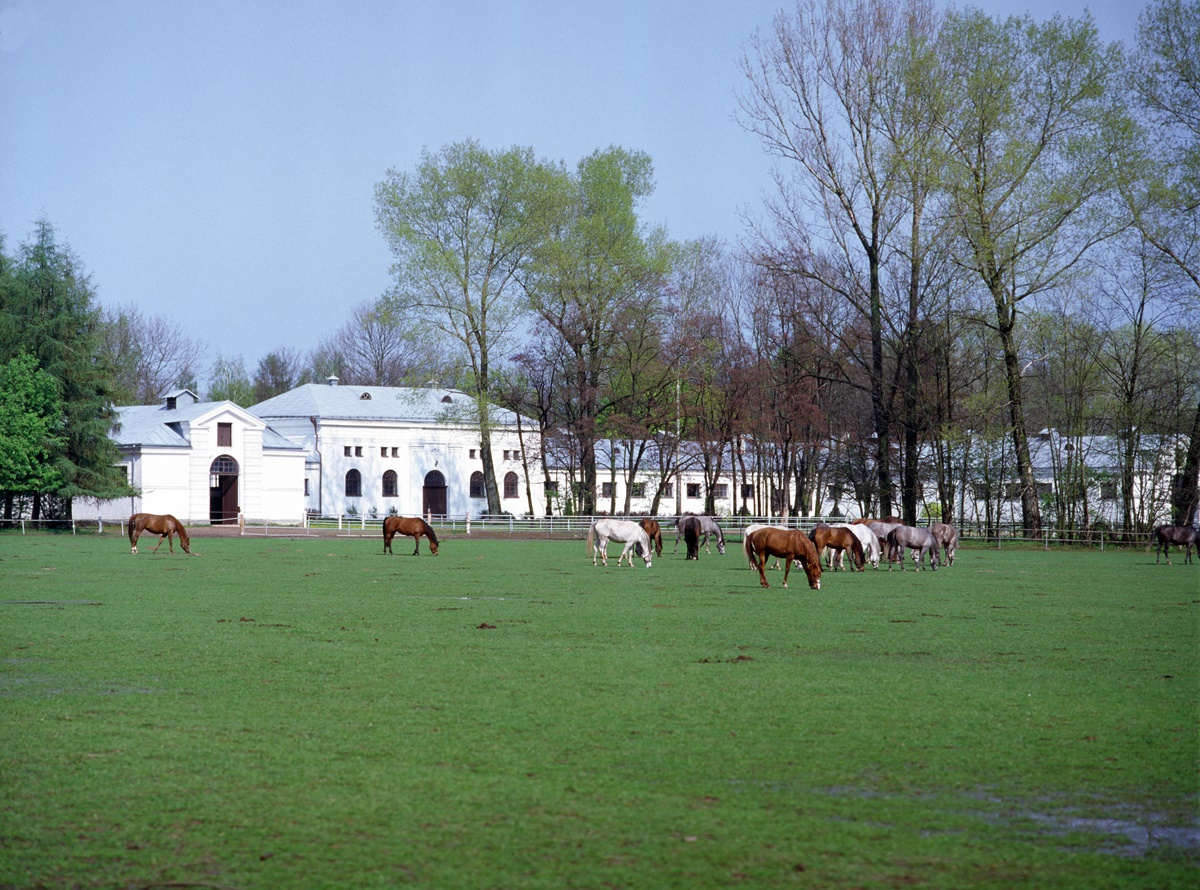
The history of this stud reaches back to Napoleonian times when the number of horses fell dramatically in the Polish lands. By decree of Tsar Alexander I at the request of the Administrative Council of the Kingdom of Poland, a state herd of horses was created, which gave rise to the current stud.
Up until the January Uprising, the stud was supervised by Polish people. After the start of World War I in 1914, the management was taken over by tsarist officials, and soon after, all the horses were evacuated to Russia. Unfortunately, none of the horses ever returned to Polish soil.
After Poland regained its independence, the stud was re-established, and a new manager was appointed – Stanisław Pohoski, and a deputy manager – Andrzej Kryształowicz. The management thanks to effective actions, started the successful reconstruction of Arabian horse breeding, as well as the stud itself.
In 1920 Janów Podlaski stud gained three mares that originated three most important female breeding lines: Mlecha, Sahara, and Gazella.
Right before World War II, a German horse specialist – Gustav Rau – visited the stud and wrote that he had never seen such beautiful Arabian horses as those that are bred in Janów Podlaski. When WWII began, the existence of the stud was once again questioned. A few days before the soviets entered Poland in September of 1939, people tried to evacuate around 200 horses and transport them to Wołyń. Unfortunately, after the Red Army entered Poland, the horses were transported back to Janów Podlaski. During that transport, many horses got lost, while the stud itself was robbed and later burned by the Soviet army.
Soon after, the German army entered the stud and along with them came mentioned above Gustav Rau. He was a commissioner for horse breeding and thanks to that title, he took command in Janów Podlaski. He brought back famous Arabians – stallions Witraż, Wielki Szlem, and other purebred Arabian horses.
In the summer of 1944, around 300 Arabian horses were evacuated to the German city - Drezno. However, the city soon after was bombed and the herd lost its numbers. Thankfully, six years later 80 horses (mares and foals) were transported back to Janów Podlaski by water. Stallions were scattered around the world so bringing them back took a few more years; successful retrieval happened in 1960. That year marked the stud's true development along with a return as manager Andrzej Kryształowicz, who organized the first Arabian auction in 1969.
In the meantime, some other important female breeding lines emerged that originated from mares: Milordka, Ukrainka, Szweykowska, Wołoszka, Selma, Rodania, Adjuze, or Semrie; their offspring can be found till these days.
Polish Arabian horses emerged from stallions such as Kuhailan Haifi, Ilderim, Bairactar, Saklawi I, Krzyżyk, Kuhailan Afas, Ibrahim, Abu Argub II, Kuhailan Zaid, Latif I, Koheilan Adjuze, Wafi or Mirage.

From the time of the first auction, over 1000 horses were sold abroad Poland. The best success of the stud was the sale of stallion El Paso in 1980 for 1mln dollars and a mare Penicylina in 1985 for 1,5mln dollars. The record of the Pride of Poland auction was set by Pepita in 2015, which was sold for 1,4mln euros.
But Janów Podlaski State Stud is not only known for its auction but also for horse shows that are organized from spring till autumn – shows for Arabian as well as Anglo-Arabian horses. The breed is also tested on the racetrack in flat races - the most important of which is Derby (similarly to Thoroughbreds).
Arabian Horses – features and characteristics
Arabian horses have a such specific physique that it's impossible to mistake them for another breed. What's more, their influence can be noticed in many other horse breeds – in polish breeds as well (e.g., the Malopolski).
Generally speaking, Arabians, in comparison to other breeds, have a small, slim head often with a distinctive concave (dished) profile. They have lively sickle-shaped ears and a swan neck. The eyes of Arabian horses are amazing – big, sharp, and lively. Their short but muscular and strong back doesn't always have well-defined shoulders. The croup is leveled (horizontal) and short with a high-set tail that is naturally carried high. The legs are slim with small hooves, often with postural defects but always strong. Their coats are short but extremely shiny.
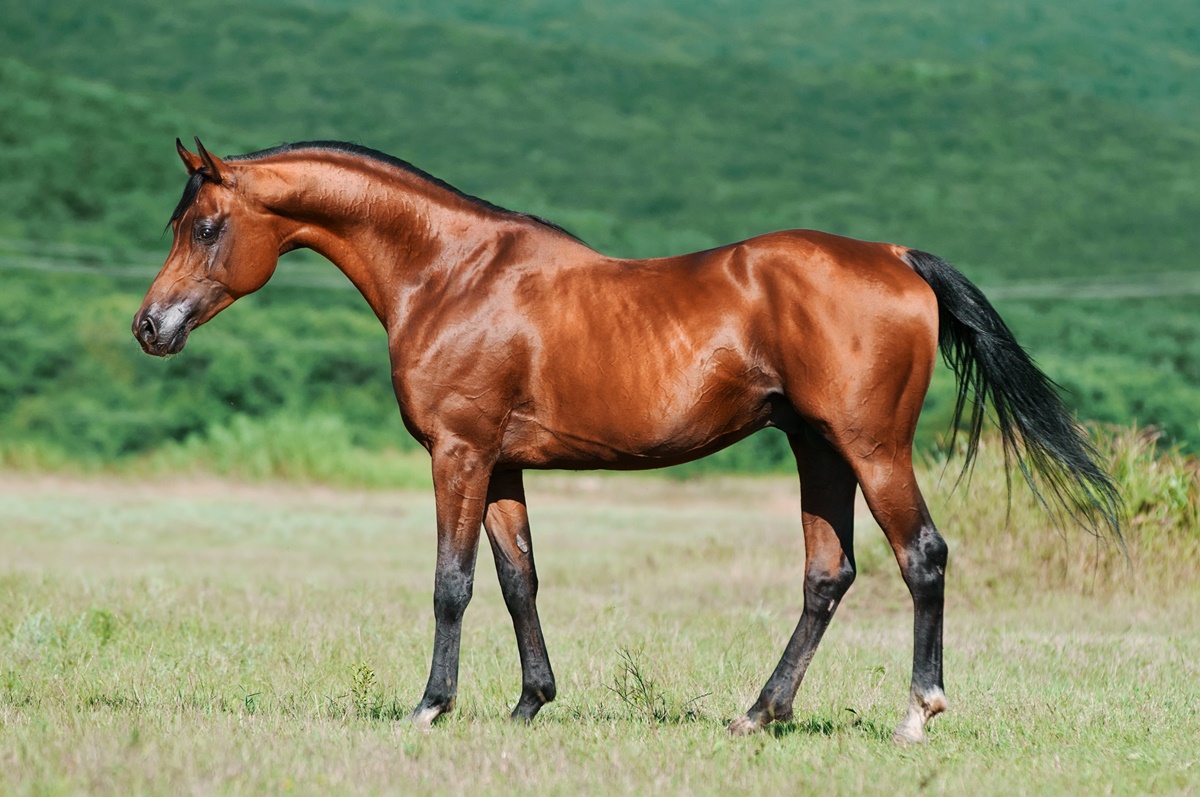
There are a few different types of Arabians – three of the most known one's descent from the above-mentioned founding father stallions:
- Kuhailan – bred specifically as a war or riding horse. These horses are strong and have solid neck and big head that often lacks the characteristic concave profile (the most recognizable feature of Arabians). Coat colors include bay and dark bay,
- Saklavi – these horses are smaller and lighter, however less resilient than Kuhailan. This line is often referred to by laymen as the exemplary Arabian horses. Often shown and eagerly photographed. They have a light and slim physique, concave head profile, and large nostrils. Most often gray. Back in the day, they were bred as show or trail horses and as horses for ladies.
- Munighi – horse with a slimmer and longer head than the two other lines. They have a straight head profile, oblique shoulders, and long legs. The most common coat is chestnut. These horses are resilient and fast over short distances, which makes them a common choice for horse racing,
Arabian horses are known for their canter – efficient, fast but at the same time light. These horses can easily canter over long distances. Their trot is just as light with an extended suspension. This looks especially impressive when they are agitated and excited about something – Arabians look spectacular with their wide-open nostrils and a high-carried tail.
The walk of Arabians is often too short but energetic just like the horses themselves.
Height: 145-155 cm
Weight: 400-450 kg
Coat: all basic coat colors, except for pinto, often flea-bitten gray and dapple gray with markings on legs and head.
Arabian Horses – roles
Back in the day, Arabians were great war horses, that allowed their riders to cover big distances over sandy terrain and attack quickly. These days, Arabians can commonly be found during horse shows. Arabians are lively, flexible, intelligent, and eager to learn. It's more and more common to find Arabians in smaller competitions and appear in western, jumping, and dressage disciplines.
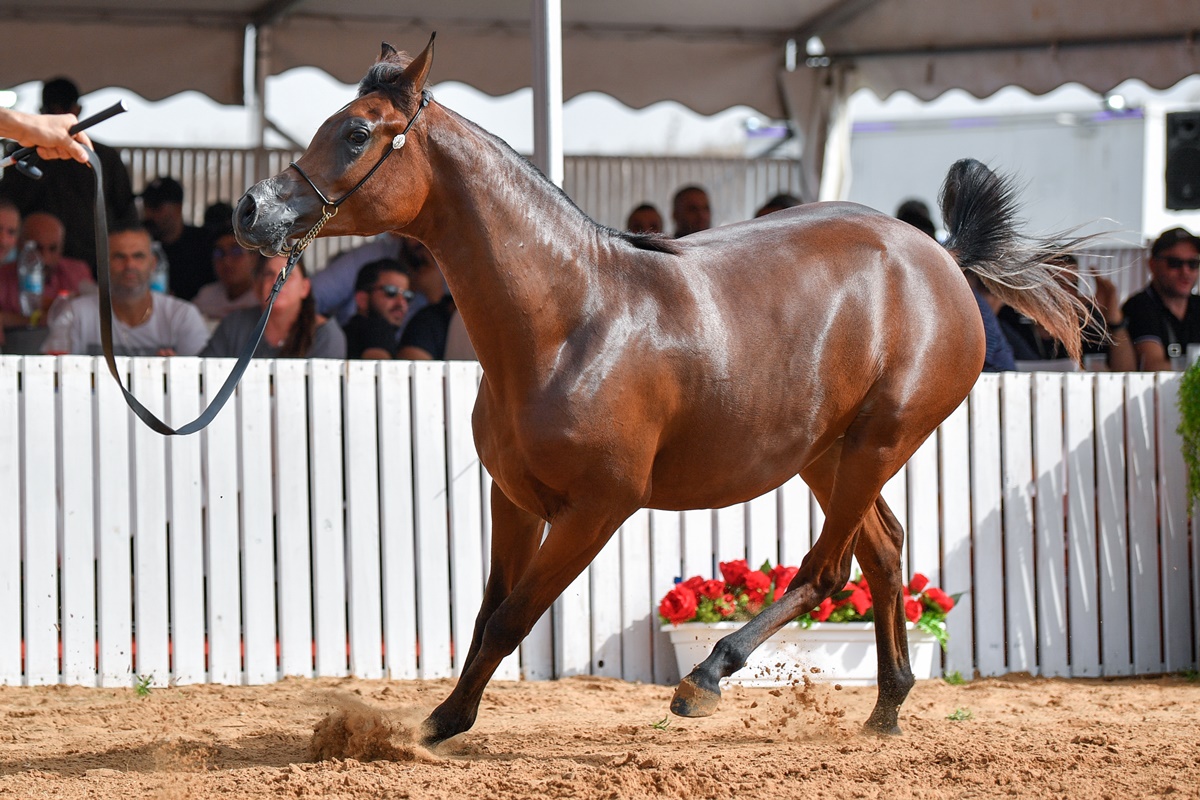
Arabian horses are extremely energetic – highly sensitive to stimuli, restless, and easily spooked. Because of that, the breed is not recommended for recreational riding or beginners that lack the necessary skills.
These horses are very resilient, which makes them perfect for short distances (racing) as well as long distances (trail rides, endurance).
Arabians are an especially good breed for endurance riding – their efficient canter is ideal for this type of riding. They also have a physique ideal for endurance – their body is light but strong as well as robust, nicely built legs, which is crucial for covering long distances (up to 160km daily). Arabians are also valued in endurance for their perseverance, and ability to quickly regenerate and cover long distances at high temperatures.
How long do Arabians live for?
Arabian horses are characterized by their longevity and fertility – they can live up to 30 years old. They reach sexual maturity at the age of about 3.5 years, and the period of growth and development ends as in most horses - at the age of 5 years.
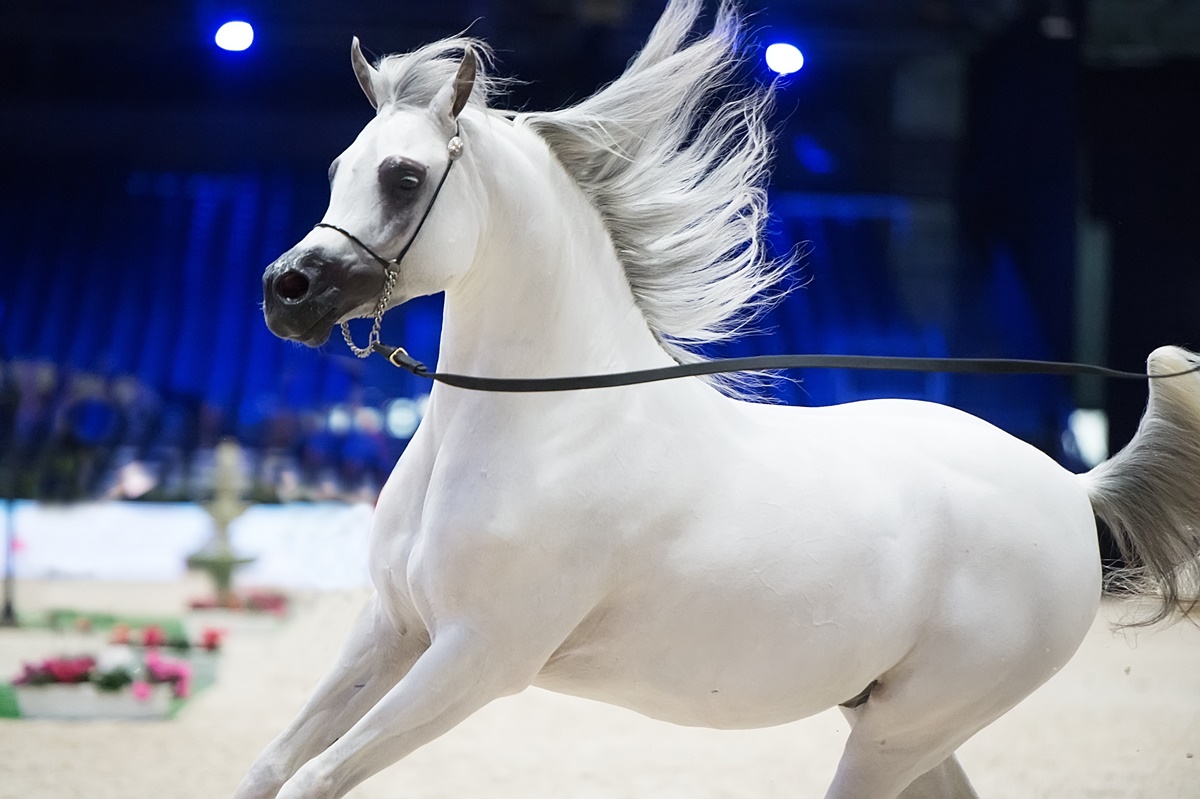
How much do Arabian horses cost?
The most expensive Arabian sold in Poland cost 1,4mln dollars, while the least expensive ones can cost around 10 thousand zlotys. The price depends on the horse's age, pedigree, and level of training.
Anglo-Arabian vs Arabian horses
Anglo-Arabian horses (XX00) are a mix of two breeds – Arabian horses (00) and Thoroughbreds (XX). This crossbreeding created great sport horses that are "hot-heated" - a perfect one-word explanation of their character. These horses are slim, resilient, and fast. They have fast and efficient gaits and jump well.
Their breeding started thanks to wars and trades – which led to the arrival of oriental (Arabian) horses in France. The French ruler – Napoleon Bonaparte rather than big horses, preferred light Oriental ones. By his order, Arabian stallions imported from the war were collected at the Pompadour Stud. With the acquired horses, the stud manager - Eugene Gayot (general inspector of all French studs from 1847) officially started Anglo-Arabian breeding on a bigger scale. Anglo-Arabian breeding was already conducted by Duke of the Palatinate Christian IV in Zweibrücken, where he created the founding fathers of this breed.
These days Anglo-Arabians are still mostly bred in France (studs in Pau, Pompadour, and Tarbes), but studs can also be found in Poland (Pruchna, Walewice, Janów Podlaski) and in England.
Coat: most commonly bay, chestnut, and grey
Height: 155-165 cm
Other related breeds include the Sardinian Anglo-Arab (breeding conducted in Sardinia, Chilivani, and a private stud in Scuderia de Nora) as well as the Shagya Arabian (the breed was created in the Austro-Hungarian Empire, today breeding mainly in Hungary - Babolna, Slovakia - Topolczanka, Austria and other countries created after the collapse of the monarchy and in Germany).
Summary
Arabian horses will make quite an impression even on a layman. These horses are full of grace and have an amazing, light, almost floating gait. It's the oldest and one of the most known breeds in the world – not only thanks to their beauty but also because of the considerable prices that horses of this breed reach during world auctions.











